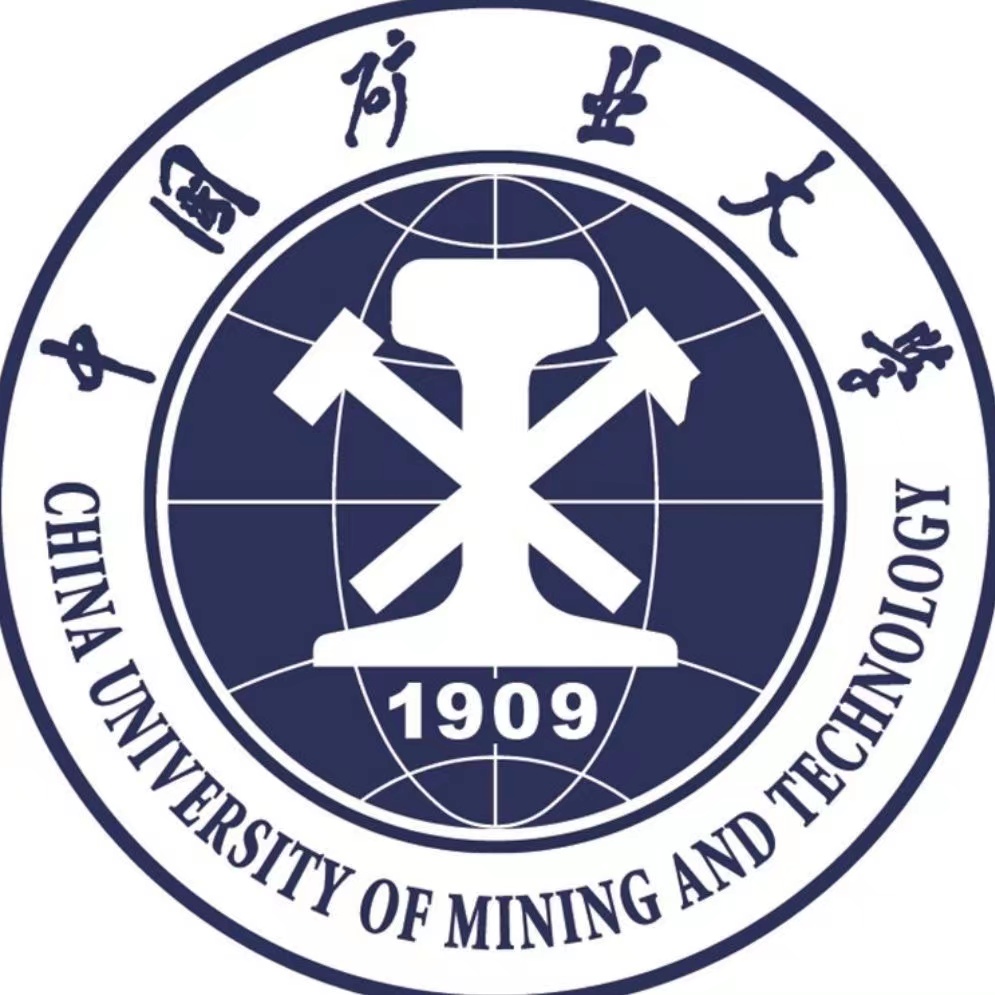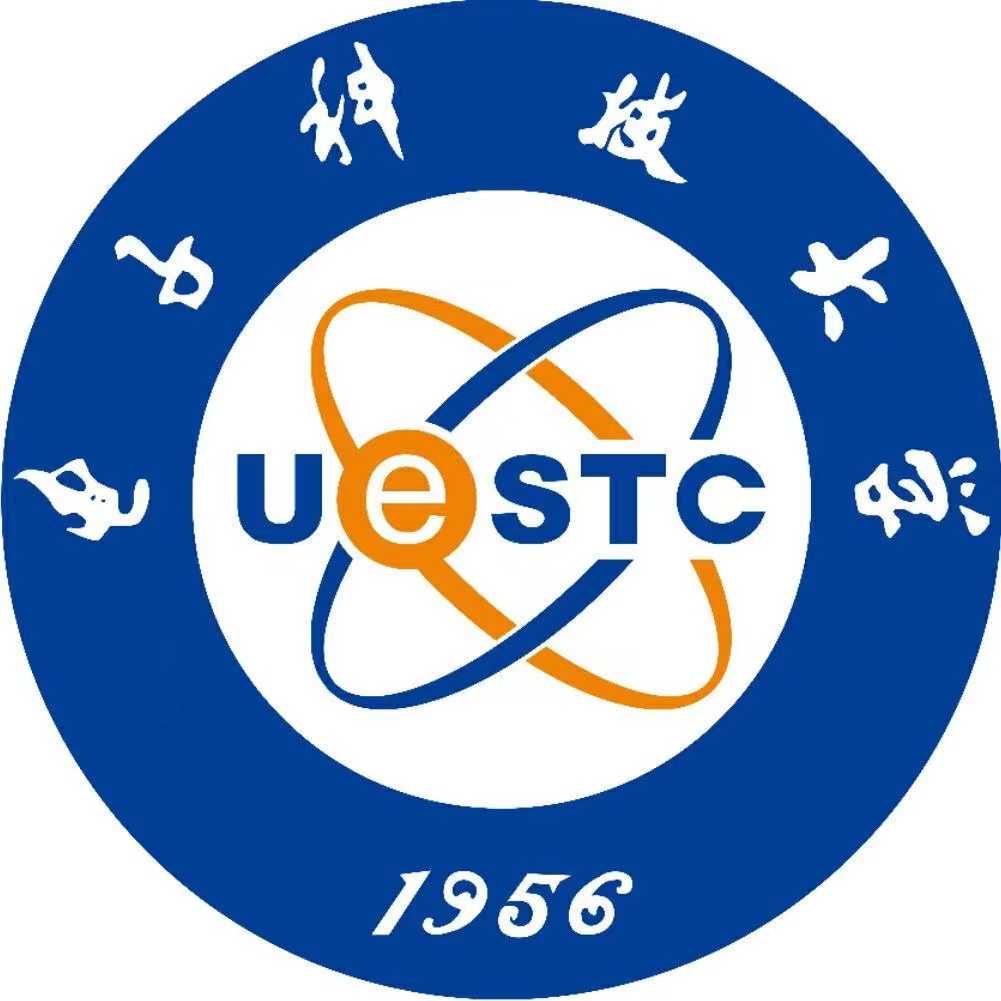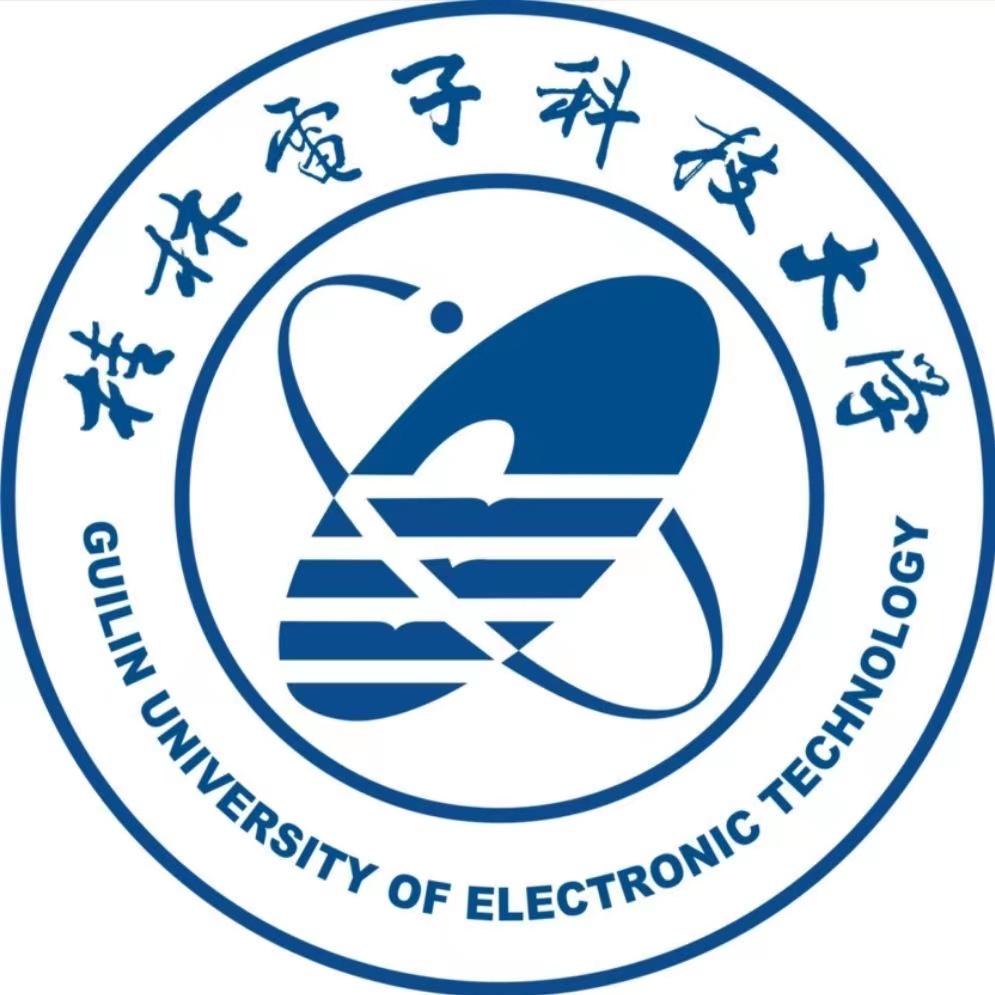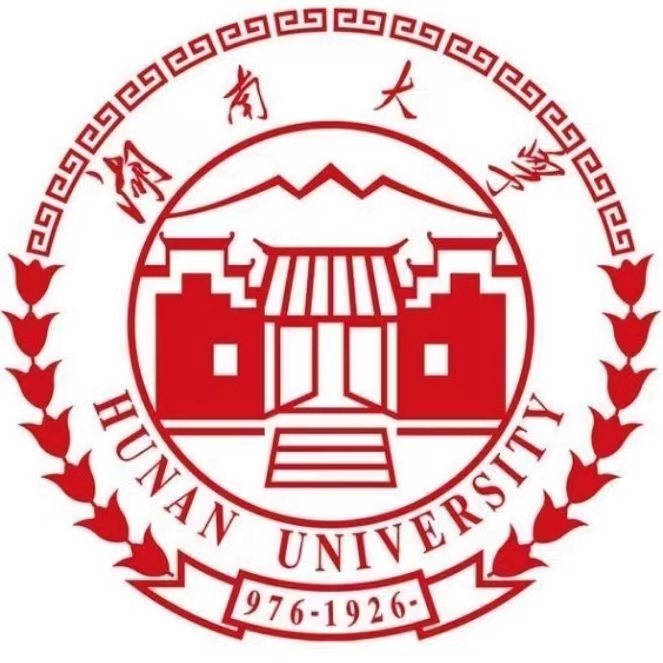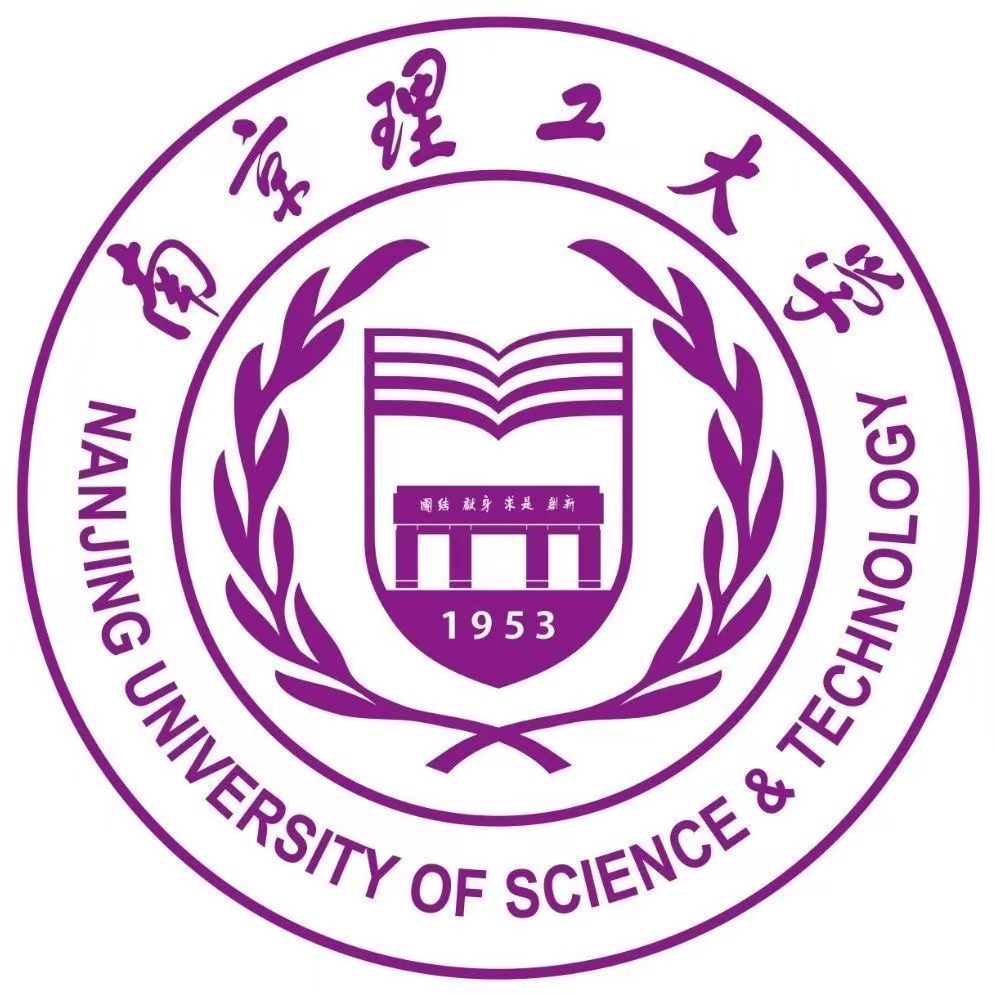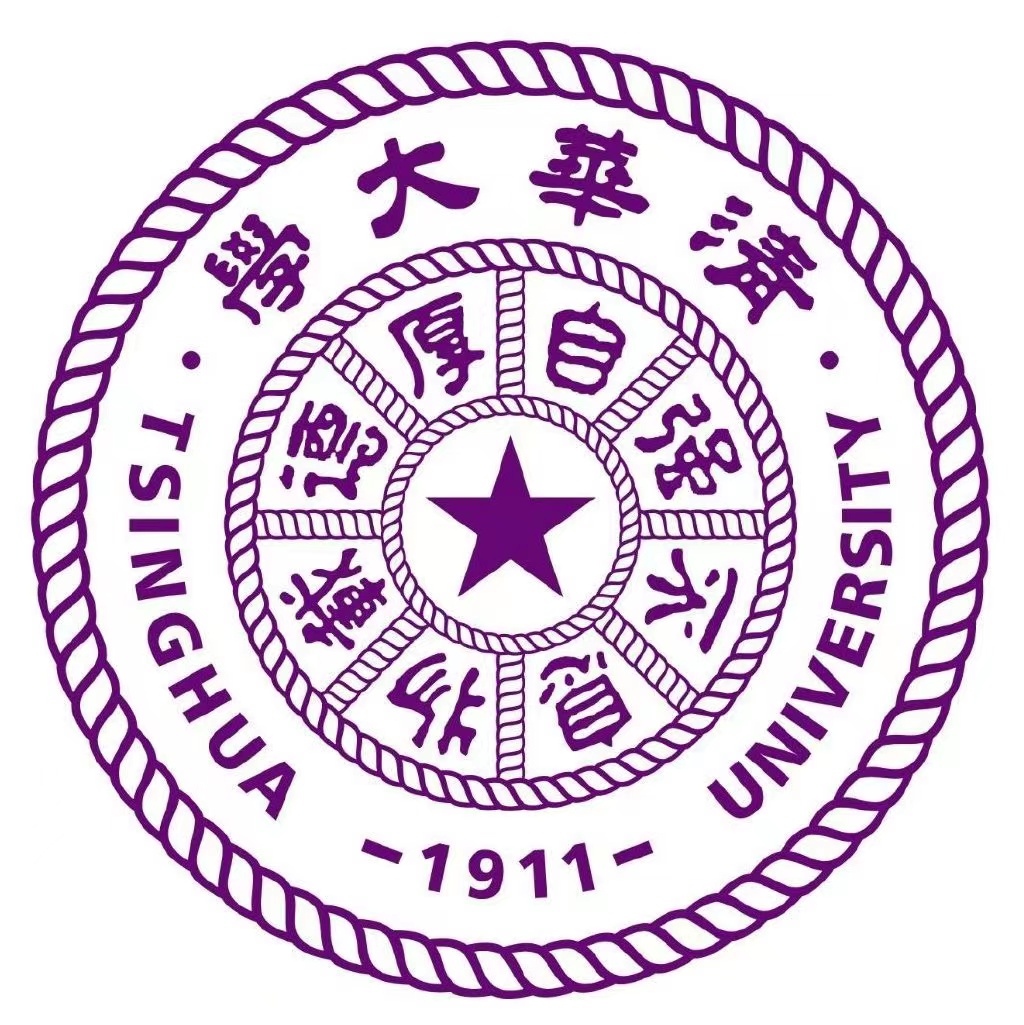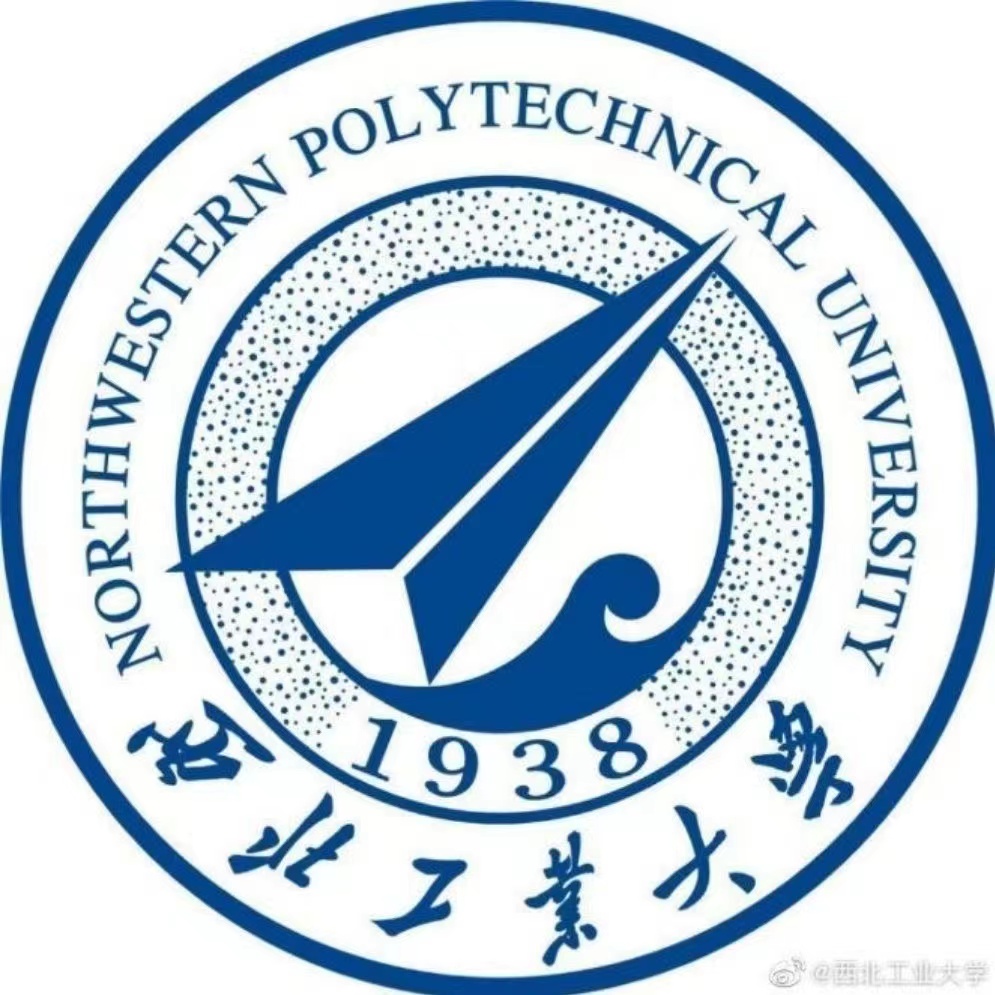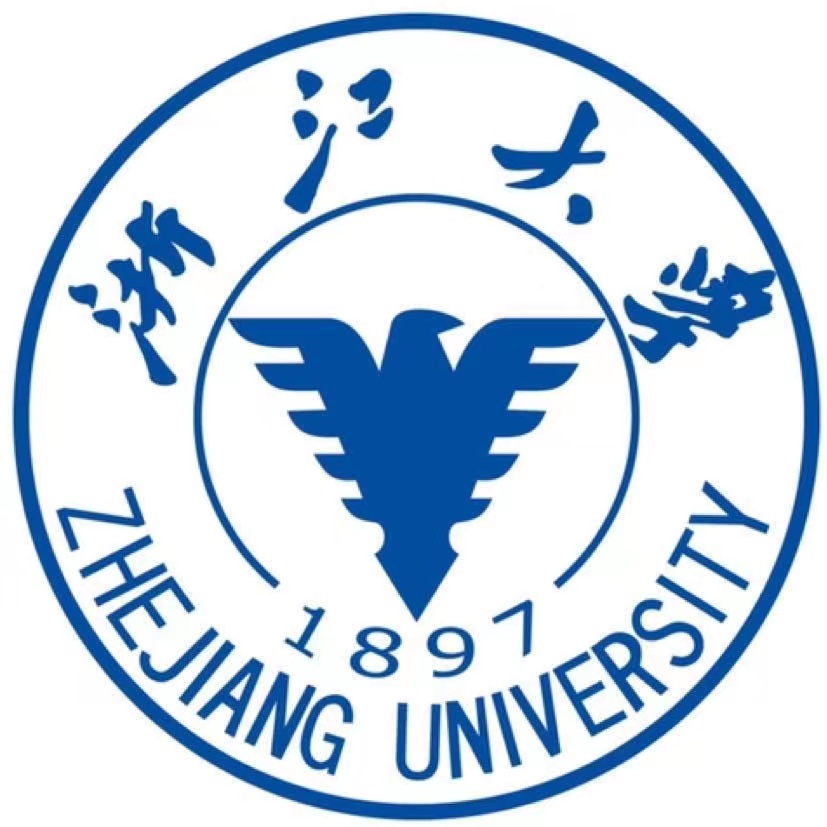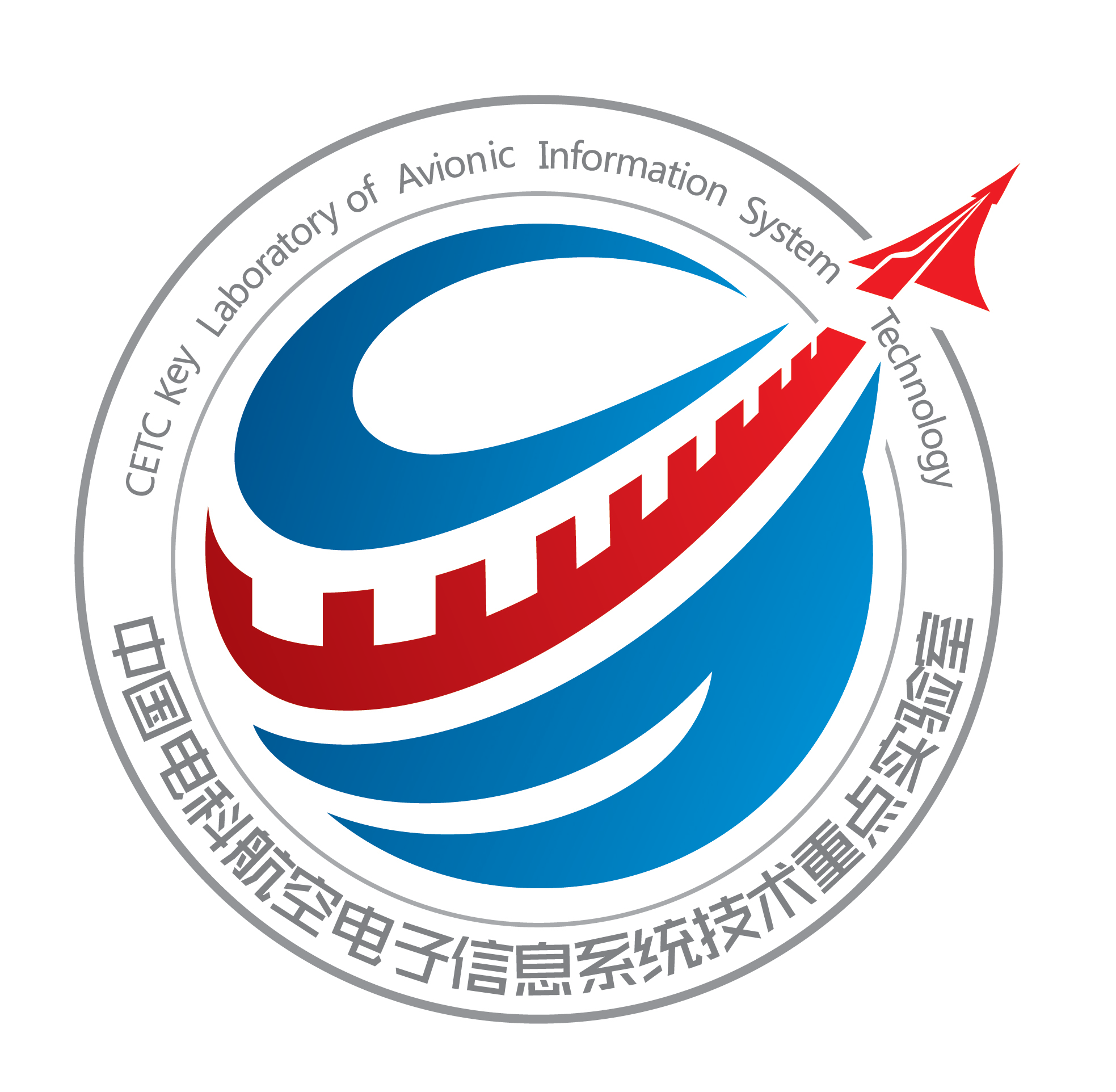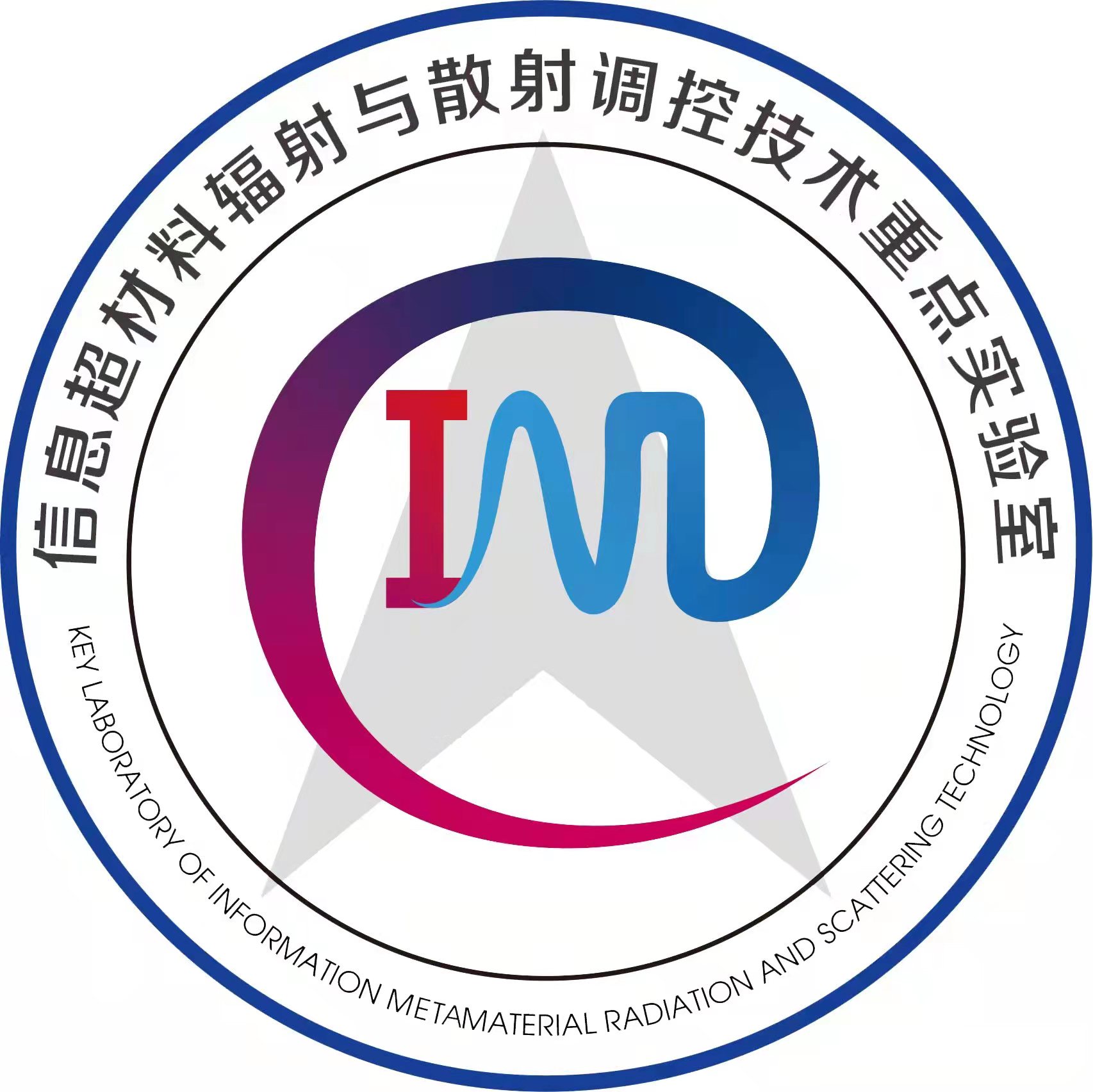关于2022ACES-China国际会议的延期通知
由于目前国内外严峻的疫情形势,经ACES-China会议组委会商议一致决定,本届会议将以线上(海外)+线下(国内)的混合方式,延期至2022年10月28日至31日在徐州召开,具体日期待定。目前参会注册和缴费系统已全面开通,诚邀大家踊跃参会。
Postponement of ACES-China 2022 Conference
Due to the serious situation over the world and the local about the Coronavirus (COVID-19), considering the discussion of ACES-China 2022 Conference Organizing Committee, the conference will be held in a hybrid way which is online (overseas) and offline (domestic). The new dates have been chosen from October 28 to 31, 2022. The exact date will be determined soon. The registration is now open.
关于会议现场论文海报格式的通知
海报上必须标明论文题目,所有作者和单位信息。
每位参展论文均配备单独的海报背板,海报尺寸为1.2米高,0.8米宽。海报背景建议米色或白色。组委会现场可提供胶带来张贴海报。请每位参展人员提前准备好所有的展示材料,会议现场不提供相关服务。
One poster board is provided for each presentation, which is 1.2M(height)*0.8M(width). The background color of the board is usually beige or white. Tapes are provided by conference committee to mount your posters on the boards. All materials to be displayed should be prepared before your arrival. Supplies will not be available at the conference site.
关于学生论文竞赛的重要通知
学生论文竞赛的研讨会(海报专栏)将于2022年10月29日15:30-17:30召开,届时将由组委会评审委员对进入终审环节的论文海报进行评审。学生论文竞赛海报尺寸:1.2米高,0.8米宽。缺席者即自动退出竞赛。
The Student Paper Competition interactive forum(Poster Session) is anticipated to take place on October 29, 2022 from 15:30 to 17:30, where the finalists posters will be judged by leading memebers of our society. Recommended Poster Size:1.2M(height)*0.8M(width). No show means the authors withdraw their papers from the contest.
Welcome
The International Applied Computational Electromagnetics Society Symposium in China serves as a forum for developers, analysts, and users of computational techniques applied to electromagnetic field problems for all frequency ranges. The symposium includes technical invited plenary and regular presentations, software tutorials, vendor booths, and short courses.
The symposium will be held in Xuzhou, China on July 28-July 31, mid to late September, October 28-31, 2022. Papers may address general issues in applied computational electromagnetics or focus on specific applications, techniques, codes, or computational issues of potential interest to ACES members through invited and contributed papers. Distinguished researchers will be invited to deliver keynote speeches on technology trends and significant advances in relevant topics.
Important Date:
Paper Submission Deadline: April 30, 2022, May 20, 2022
Notification of Acceptance: May 31, 2022, June 10, 2022
Final Paper Submission: June 15, 2022, June 20, 2022
Important NOTICE!
1. Please check the format of your final manuscript. It must meet the requirements of the template and IEEE. If not, please resubmit the final version of your manuscript.
2. Please go to the "Paper Submission" site to verify all conditions, which includes the processes of the final version and the copyright transfer of IEEE.
3. The registration of 2022 ACES-China is open now! Please go to the "Registration" site to get more information about the early bird.
重要提示
1.请大家检查自己稿件的格式是否满足template和ieee要求;如不满足,请重新提交终稿;
2.关于终稿提交方法与问题,以及ieee版权转移方式,请大家到paper submission页面去查看详细信息;
3.2022ACES-China目前已经开放注册,请大家至注册页面查看更多“early bird”注册信息。
Steering Committee
Zhining Chen, National University of Singapore
Qingxin Chu, South China University of Technology
Tie Jun Cui, Southeast University
Atef Elsherbeni, Colorado School of Mines
Yijun Feng, Nanjing University
Yongxin Guo, National University of Singapore
Yang Hao, Queen Mary University of London
You He, Naval Aviation University
Wei Hong, Southeast University
Jun Hu, University of Electronic Science and Technology of China
Jianming Jin, University of Illinois at Urbana-Champaign
Yaqiu Jin, Fudan University
Ming Liu, Institute of Microelectronics of the Chinese Academy of Science
Qinghuo Liu, Duke University
Junfa Mao, Shanghai Jiao Tong University
Branislav Notaros, Colorado State University
Donglin Su, Beihang University
Shandong Tu, East China University of Science and Technology
Junhong Wang, Beijing Jiaotong University
Wei Wang, Sun Yat-sen University
Xuesong Wang, National University of Defence Technology
Yaonan Wang, Hunan University
Yongliang Wang, Air Force Early Warning Academy
Keli Wu, The Chinese University of Hong Kong
Mingyao Xia, Peking University
Fan Yang, Tsinghua University
Wenhua Yu, Jiangsu Normal University
Organizing Committee
Honorary General Chair:
Bo Shen, National Key Laboratory of Science and Technology on Test Physics & Numerical Mathematics
Honorary TPC Chair:
Shiying Li, China University of Mining and Technology
General Chair:
Jiaqi Liu, National Key Laboratory of Science and Technology on Test Physics & Numerical Mathematics
General Co-Chairs:
Lei Zhao, China University of Mining and Technology
Dazhi Ding, Nanjing University of Science and Technology
Yongzhen Li, State Key Laboratory of Complex Electromagnetic Environment Effects on Electronics and Information System
Zengrui Li, Communication University of China
Zhijian Li, Key Laboratory of Information Matematerial Radiation and Scattering Technology
Agostino Monorchio, Pisa University
Wensheng Qiao, CETC Key Laboratory of Avionic Information System Technology
Wenyan Yin, Zhejiang University
Shigang Zhou, Northwestern Polytechnical University
Technical Program Chair:
Shengjun Zhang, National Key Laboratory of Science and Technology on Test Physics & Numerical Mathematics
Technical Program Co-Chairs:
Xiaofeng Ai, National University of Defense Technology
Chonghua Fang, China Ship Development & Design Center
Gaosheng Li, Hunan University
Long Li, Xidian University
Wenxin Liu, Aerospace Information Research Institute, Chinese Academy of Sciences
Xiaochun Liu, Key Laboratory of Aeronautical Science and Technology for High Performance EM Window
Tao Jiang, Harbin Engineering University
Jinjun Mo, Guilin University of Electronic Technology
Xiaomin Pan, Beijing Institute of Technology
Sheng Sun, University of Electronic Science and Technology of China
Qi Wu, Beijing University of Aeronautics and Astronautics
Xiuyin Zhang, South China University of Technology
Hongxing Zheng, Hebei University of Technology
Deyun Zhou, Northwestern Polytechnical University
Awards Chair:
Tie Jun Cui, Southeast University
Student Paper Competition Chairs:
Zhongxiang Shen, Nanyang Technological University
Lixin Guo, Xidian University
Jiming Song, Iowa State University
Student Modeling Contest Chairs:
Xia Ai, National Key Laboratory of Science and Technology on Test Physics & Numerical Mathematics
Weibin Lu, Southeast University
Short Course/Tutorial Chairs:
Lu Gao, National Key Laboratory of Science and Technology on Test Physics & Numerical Mathematics
Maokun Li, Tsinghua University
Feng Xu, Fudan University
Women Scholar Chair:
Ying Liu, Xidian University
Special Sessions Chairs:
Danilo Brizi, Pisa University
Xiaoming Chen, Xian Jiaotong University
Zhangcheng Hao, Southeast University
Zhixiang Huang, Anhui University
Lijun Jiang, The University of Hong Kong
Wen Jiang, Xidian University
Yingsong Li, Harbin Engineering University
Zhuo Li, Nanjing University of Aeronautics and Astronautics
Guoqing Luo, Hangzhou Dianzi University
Fanyi Meng, Harbin Institute of Technology
Dazhi Piao, Communication University of China
Hexiu Xu, Air Force Engineering University
Su Yan, Howard University
Qingfeng Zhang, Southern University of Science and Technology
Yongjin Zhou, Shanghai University
Sponsorship/Exhibition Chairs:
Xiaofei Wang, National Key Laboratory of Science and Technology on Test Physics & Numerical Mathematics
Weihua Wang, China University of Mining and Technology
Registration Chairs:
Luoxi Wang, National Key Laboratory of Science and Technology on Test Physics & Numerical Mathematics
Deqiang Cheng, China University of Mining and Technology
Publication Chairs:
Yue Li, Tsinghua University
Yichun Cui, National Key Laboratory of Science and Technology on Test Physics & Numerical Mathematics
Xianglin Kong, China University of Mining and Technology
Publicity Chairs:
Wei E. I. Sha, Zhejiang University
Mingliang Wang, National Key Laboratory of Science and Technology on Test Physics & Numerical Mathematics
Xiaopeng Shen, China University of Mining and Technology
Finance Chairs:
Huimeng Zhao, National Key Laboratory of Science and Technology on Test Physics & Numerical Mathematics
Xianglin Zhang, National Key Laboratory of Science and Technology on Test Physics & Numerical Mathematics
Lei Li, China University of Mining and Technology
Website Chairs:
Ruofeng Xu, China University of Mining and Technology
Local Arrangements Chair:
Zhichao Yu, China University of Mining and Technology
Conference Secretariat:
Hang Song, National Key Laboratory of Science and Technology on Test Physics & Numerical Mathematics
Yuning Zhang, National Key Laboratory of Science and Technology on Test Physics & Numerical Mathematics
Jun Wang, China University of Mining and Technology
Call For Paper:![]() CFP_ACESChina2022.pdf
CFP_ACESChina2022.pdf
Topics
The topics include, but are not limited to, the following technical areas:
Computational Methods
Integral Equations/Differential Equations; Hybrid and Multi-Physics Computations; Time Domain/Frequency Domain; Low Frequency/Asymptotic and High Frequency; Parallel and GPU Computations; Optimization Techniques
EM Modeling and Applications
Small Antennas; Wideband and Multiband Antennas; Terahertz Antennas; Antenna Arrays; Printed and Conformal Antennas; RFID Antennas/Systems; Near-field Techniques; Bio-Electromagnetics; Wearable Antennas; Space and Satellite Antennas; Antennas with Advanced/Complex/Artificial Materials and Processes; Implantable Antennas; Body Channel Modeling; Radio Propagation Modeling, Channel Estimation and Communication Systems; EMC; Wireless Power and RF Energy Harvesting; Dielectric Resonator Antennas; Engineering Metamaterials and Plasmonics for Absorption, Cloaking, and Wave Manipulation; Microwave Measurement Techniques; Material Microwave Property Characterization; Nanotechnology; Textile Electronics; Carbon Nanotubes and 2D Graphene Electronic and Optoelectronic Devices; Wide Bandgap/Emerging Semiconductor Electronic Devices; Passive/Active Microwave and Terahertz Devices; MEMS and MMICs; Large-area Printing, Inkjet Printing and 3D Printing Technologies; Low-temperature Co-fired Ceramics and Liquid Crystal Polymers for Microwave Devices; Microwave Remote Sensing; SAR Algorithms and Systems; Inverse Scattering; Radar Techniques
Optimization and Design
Sensitivity Analysis; Deterministic and Stochastic Methods; Neural Networks; Artificial Intelligence and Expert Systems.
Devices and Applications
Electric Machines and Drives; Nondestructive Testing; Induction Heating; Wide Bandgap Devices; Power Electronic Devices; Flexible Power Electronics; Microsystems; Biomedical Applications; Charged Particles Trajectories; Accelerators; Electromagnetic Launchers; Fusion Machines; Electromagnetic Compatibility
ACES-China Technical Excellence Award
The ACES-China Technical Excellence Award is given annually to recognize outstanding career achievement by an individual in the field of applied computational electromagnetics. Nominations are solicited for the 2022ACES-China Technical Excellence Award. The deadline for nominations is June 1, 2022.
Application Form :![]() ACES_China_2022_TEA.pdf
ACES_China_2022_TEA.pdf
Young Scientists Award
A limited number of awards are available to assist young scientists to attend the 2022 ACES-China Symposium. Candidates must be less than 35 years old on December 31, 2022. Applications for the Young Scientists Awards are due on June 15, 2022.
Application Form:![]() Young Scientist Award.rar
Young Scientist Award.rar
Best Student Paper Awards
Awards for Best Student Paper(s) will be presented to the winners at the conference. The author must be a full-time student who presents, as the first author, the paper at the conference. Students who wish to participate in this competition should upload their papers directly to the designated “Student Paper Competition” upload option.
2022 ACES-中国大奖
2022年ACES-中国技术卓越奖正在征集提名截止日期为 2022 年 6 月 1 日
青年科学家奖的申请截止日期为 2022 年 6 月 15 日
2022 ACES-中国奖委员会主席
崔铁军 教授 东南大学
Keynote-1:Evolution of Millimeter Wave Civil Radars
Wei Hong*1, Hui Zhang1,2, Gang Xu1, Yan Huang1, Debin Hou3, Jixin Chen1, Ken Chen4
1State Key Laboratory of Millimeter Waves, School of Information Science and Engineering, Southeast University, Nanjing, 210096, P. R. China
2Hawkeye Tech., 3MiSic Microelectronics Ltd., 4SuDao Group
Abstract: In this talk, the evolution and recent advances in millimeter wave (mmWave) civil radars, including the integrated circuits (Chip), antennas and automotive radar, intelligent traffic radar, SAR imaging Radar systems in the State Key Laboratory of Millimeter Waves (SKLMMW) of Southeast University and cooperative enterprises are reviewed.
Biography:
 Wei Hong received the B.S. degree from the University of Information Engineering, Zhengzhou, China, in 1982, and the M.S. and PhD degrees from Southeast University, Nanjing, China, in 1985 and 1988, respectively, all in radio engineering.
Wei Hong received the B.S. degree from the University of Information Engineering, Zhengzhou, China, in 1982, and the M.S. and PhD degrees from Southeast University, Nanjing, China, in 1985 and 1988, respectively, all in radio engineering.
He is currently a professor of the School of Information Science and Engineering, Southeast University. In 1993, 1995, 1996, 1997 and 1998, he was a short-term visiting scholar with the University of California at Berkeley and at Santa Cruz, respectively. He has been engaged in numerical methods for electromagnetic problems, millimeter wave theory and technology, antennas, RF technology for wireless communications etc. He has authored and co-authored over 300 technical publications and two books. He twice awarded the National Natural Prizes, four times awarded the first-class Science and Technology Progress Prizes issued by the Ministry of Education of China and Jiangsu Province Government etc. Besides, he also received the Foundations for China Distinguished Young Investigators and for “Innovation Group” issued by NSF of China.
Dr. Hong is a Fellow of IEEE, Fellow of CIE, the vice presidents of the CIE Microwave Society and Antenna Society, the Chair of the IEEE MTT-S/AP-S/EMC-S Joint Nanjing Chapter, and was an elected IEEE MTT-S AdCom Member during 2014-2016. He served as the Associate Editor of the IEEE Trans. on MTT from 2007 to 2010.
Keynote-2:From Electromagnetic Compatibility to Electromagnetic Safety
Donglin Su
School of Electronic and Information Engineering, Beihang University, Beijing 100191, China
Abstract: Based on the trend of developments for modern electronic systems and combined with the characteristics of intelligence and interconnectivity in future electromagnetics information systems, this talk analyzes the importance of electromagnetic compatibility (EMC) and electromagnetic safety. The correlations between some commonly misinterpreted concepts are briefly introduced, including complex electromagnetic environmental issues and electromagnetic compatibility, electronic countermeasures and electromagnetic compatibility, electromagnetic environment adaptability and electromagnetic compatibility etc. The complexity of electromagnetic compatibility and electromagnetic security-related work is discussed. Next, from the electromagnetic interference (EMI) and EMC point-of-view, the connotation and correlation relationship of related basic concepts are introduced, which leads to the understanding that EMI is an inherent attribute, while EMC is the requirement of thresholds for EMI. The key technologies of EMI characterization and EMC quantitative design are then discussed. Based on EMI and EMC, the related concepts and logical relationships of electromagnetic environment effect (E3) and electromagnetic security are introduced. Finally, this talk analyzes the problems of EMI testing and E3 testing in the development of electronic information system, and proposes some suggestions to support the development in the field of EMC and electromagnetic security from the perspectives of talent training, fundamental research and major facilities layout.
Biography:

Donglin Su received the B.Eng. and M.Eng. degrees of electromagnetic field and microwave technology, and Ph.D. degree of communication and information system from Beihang University, Beijing, China, in 1983, 1986, and 1999, respectively. From 1996 to 1998, she was a visiting scholar in the Department of Electrical Engineering, University of California, Los Angeles (UCLA). She currently is a professor in the Frontier Institute of Science and Technology Innovation and the School of Electronic and Information Engineering, Beihang University.
She has devoted herself to the field of electromagnetic compatibility (EMC) and electromagnetic environment effects for more than thirty years. Her main research interests include electromagnetic field and microwave technology, EMC and electromagnetic environment, and electromagnetic safety. In 2019, she was elected as the academician of Chinese Academy of Engineering.
Prof. Su is the director of the Ministry of Industry and Information Technology (MIIT) key lab of Electromagnetic Environment Effect (E3) for Smart System and Equipment at Beihang University. She also has several other professionals. For example, she serves as the chairs of the Expert Committee of the Electromagnetic Environmental Effects of Antennas Chapter of the Chinese Institute of Electronics, Beijing Chapter of the IEEE Antennas and Propagation Society, and the China Committee and Electromagnetic Field Theory and Application Committee of URSI (from 2011). In addition, she is the principle investigator for more than 30 research projects including the Key Basic Research of National Safety, Major Instruments Project of National Natural Science Foundation of China (NSFC), Key Program of NSFC, and many others.
Keynote-3:Intelligent Metamaterials
Tie Jun Cui
State Key Laboratory of Millimeter Waves, Southeast University, Nanjing 210096, China, Email: tjcui@seu.edu.cn
Abstract: We proposed the concepts of digital coding metamaterial/metasurface, in which the meta-atoms are represented by using digital states of phases. The digital representation of metamaterial/metasurface makes it possible to manipulate the electromagnetic waves and digital information simultaneously on the same platform, evolving a new direction of information metamaterial/metasurface. The information metasurfaces set up a bridge between the physical world and the digital world. Integrated with field programmable gate array (FPGA), the information metasurfaces can control the electromagnetic waves and process the digital information in programmable ways. By integrating artificial intelligence algorithms in FPGA, the information metasurfaces can perform intelligent tasks, yielding intelligent metasurface. In this talk, I will present some recent advances on the intelligent metasurfaces, including automatic designs of metasurfaces, intelligent microwave imaging, and intelligent microwave camera. I will also report to use several information metasurfaces to construct the convolutional neural networks, which can build up a programmable artificial intelligence machine.
Biography:

Tie Jun Cui is the Chief Professor of Southeast University, Nanjing, China. He proposed the concepts of digital coding and programmable metamaterials and realized their first prototypes, based on which he further proposed information metamaterials to bridge the physical world and digital world, and developed the new architecture information systems. Dr. Cui has published over 500 peer-review journal papers, which have been cited by more than 46000 times (H-Factor 108), and licensed over 150 patents. Dr. Cui received the Natural Science Award (first class) from the Ministry of Education, China, in 2011, the National Natural Science Awards of China (second class, twice), in 2014 and 2018, and the Highly Cited Researcher Awards from Web of Science (top 1%), in 2019-2021, respectively. His researches have been widely reported by Nature News, MIT Technology Review, Scientific American, Discover, New Scientists, etc.
Dr. Cui is the Academician of Chinese Academy of Science and IEEE Fellow. He served as Associate Editor of IEEE Transactions on Geoscience and Remote Sensing, and Guest Editors of Science China, Science Bulletin, IEEE Transactions on Microwave Theory and Techniques, IEEE Journal of Emerging Technologies in Circuits and System, Applied Physics Letters, Engineering, and Research. Currently he is the Chief Editor of Metamaterial Short Books in Cambridge University Press, the Editor of Materials Today Electronics, the Associate Editor of Research, and the Editorial Board Members of National Science Review, eLight, PhotoniX, Advanced Optical Materials, Small Structure, Advanced Photonics Research, and Journal of Physics: Photonics. He presented more than 100 Keynote and Plenary Talks in Academic Conferences, Symposiums, or Workshops.
Keynote-4:Progress of Meta-materials in the Field of Wideband Electronic System
Zhijian Li
Key Laboratory of information meta-material Radiation and Scattering Technology,
China Aerospace Science and Industry Corporation (CASIC), Nanjing, China
Abstract: For a long time, microwave technology plays an important role in modern society. The traditional microwave systems such as radar systems or communication systems are facing more severe challenges, and new technologies are urgently needed to improve the performance of these systems. Meta-material has excellent electromagnetic properties, thus it has great potential in antennas, electromagnetic stealth, microwave systems and many other fields. In this talk, I will present advances of meta-material in microwave systems. Such as improving antenna/array performance, realizing a wideband absorber, reducing antenna/array radar cross section (RCS), realizing a switchable luneburg lens reflector and so on. At the end of this talk, I will discuss the future development of meta-material in the field of wideband electronic system.
Biography:

Zhijian Li received the B.Sc. and M.Sc degree from Southeast University, Nanjing, China, in 1991 and 2004, respectively, and the Ph.D degree in Radar technology from Delft University of Technology (TU Delft), Delft, Netherlands, in 2011. From 2006 to 2008, he was a visiting scholar in International Research Centre for Telecommunications and Radar (IRCTR) at TU Delft.
He has devoted himself to the field of wideband electronic circuits and systems for a long time and has accumulated rich engineering experience in the field of microwave technologies. During the study aboard, he has participated in the research of Netherlands Technology Foundation (STW) Project “Polarimetric Agile Radar in S- And X-band (PARSAX)". From this research, he contributed a lot in the theoretical invention in system level simulation technology, accumulated rich practical experience and was awarded the degree of doctor. He was responsible for and participated in a number of key model projects, independently undertook the research on a number of key technologies, and made positive contributions to the national aerospace industry.
Dr. Li is the member of 12th Chinese People's Political Consultative Conference (CPPCC) of Jiangsu Province. He won the China Aerospace Fund Award and won Special Government Allowance by China State Council. He awarded "333 high-level talents project" which is issued by Jiangsu Province. He won the Top 10 Excellent Youth Medal, awarded by China Aerospace Science and Industry Corporation (CASIC). In addition, he has published more than 50 academic papers and obtained several patents.
Keynote-5:Intelligent processing technology for marine target detection—opportunities, challenges and prospects
You He
Abstract: With the increasing need of national security, the expansion national interests, and the development and utilization of marine resources, higher requirements have been placed on the construction of maritime protection forces, and new requirements have also been put forward for the substantial improvement of maritime target detection capabilities. The characteristics of sea clutter are complex, the detection objects are diverse, and their maneuvering are varying. The traditional information processing methods are faced with the problem of complex environments.
Aiming at this problem, a processing framework combining traditional methods and intelligent processing methods is proposed to promote the knowledge of target features, closed-loop processing of detection and tracking, and intelligent target recognition under the condition of insufficient target samples. Key scientific issues such as massive data acquisition and automatic labeling, multi-domain feature extraction, intelligent constant false alarm processing, feature-assisted target tracking, target recognition under small samples, interpretability and cognitive feedback of deep features of target recognition, etc. The technical challenges and research progress are expounded from the aspects of intelligent environment identification, intelligent integrated processing, multi-target intelligent tracking, and robust target recognition under strong confrontation.
Finally, the intelligent processing of marine targets is prospected from the perspectives of intelligent perception capability, high-performance real-time processing, interpretable intelligence of radar detection, and integrated intelligent early warning and detection of space, air, earth and sea.
Biography:
 You He is a Fellow Member of the Chinese Academy of Engineering. He received his Ph.D. degree from the Department of Electronic Engineering at Tsinghua University, Beijing, China, in 1997. He is a delegate of the 17th CPC National Congress, a member of the 12th CPPCC National Committee, and a National Outstanding Teacher. He is a CAAI/CIE/CAA/CIC/CSF/IET Fellow, a member of the Subject Appraisal Group of The State Council, a member of the Review Committee of the National Science Foundation for Distinguished Young Scholars, a member of the Advisory Expert Committee of the Information Division of the National Natural Science Foundation of China, Vice President of Chinese Association for Artificial Intelligence, Honorary Vice President of the Chinese Society of Aeronautics and Astronautics, Vice President of Chinese Institute of Command and Control, Executive Director of Chinese Institute of Electronics and Chinese Society of Aeronautics and Astronautics, Chair of Information Fusion Branch of Chinese Society of Aeronautics and Astronautics, etc. His research interests include signal detection, information fusion, intelligent technologies and their applications. As the first accomplisher, Dr. He has won 4 second prizes of the National Scientific and Technological Progress Award, 1 first and 1 second prizes of the National Teaching Achievement Award, and 11 provincial/ministerial awards, obtained the National 100 Excellent Doctoral Dissertation Award, more than 60 Chinese invention patents, and software Copyrights. He has published more than 260 academic papers and 6 books with more than 20,000 citations. He has advised more than 180 post-doctoral, doctoral, and master students. Dr. He was selected for the National Talent Project and won the HeLiangHeLi Foundation Science and Technology Progress Award, the "Qiushi" Project Award, and the National Achievement Award for Returned Overseas Students. Dr. He is a recipient of the top prize in science and technology of Shandong Province.
You He is a Fellow Member of the Chinese Academy of Engineering. He received his Ph.D. degree from the Department of Electronic Engineering at Tsinghua University, Beijing, China, in 1997. He is a delegate of the 17th CPC National Congress, a member of the 12th CPPCC National Committee, and a National Outstanding Teacher. He is a CAAI/CIE/CAA/CIC/CSF/IET Fellow, a member of the Subject Appraisal Group of The State Council, a member of the Review Committee of the National Science Foundation for Distinguished Young Scholars, a member of the Advisory Expert Committee of the Information Division of the National Natural Science Foundation of China, Vice President of Chinese Association for Artificial Intelligence, Honorary Vice President of the Chinese Society of Aeronautics and Astronautics, Vice President of Chinese Institute of Command and Control, Executive Director of Chinese Institute of Electronics and Chinese Society of Aeronautics and Astronautics, Chair of Information Fusion Branch of Chinese Society of Aeronautics and Astronautics, etc. His research interests include signal detection, information fusion, intelligent technologies and their applications. As the first accomplisher, Dr. He has won 4 second prizes of the National Scientific and Technological Progress Award, 1 first and 1 second prizes of the National Teaching Achievement Award, and 11 provincial/ministerial awards, obtained the National 100 Excellent Doctoral Dissertation Award, more than 60 Chinese invention patents, and software Copyrights. He has published more than 260 academic papers and 6 books with more than 20,000 citations. He has advised more than 180 post-doctoral, doctoral, and master students. Dr. He was selected for the National Talent Project and won the HeLiangHeLi Foundation Science and Technology Progress Award, the "Qiushi" Project Award, and the National Achievement Award for Returned Overseas Students. Dr. He is a recipient of the top prize in science and technology of Shandong Province.
Keynote-6:On the control of boundary conditions via multifunctional metasurfaces for advanced ICT and biomedical applications
Prof. Agostino Monorchio
Dept. of Information Engineering, University of Pisa, Italy
agostino.monorchio@unipi.it
Abstract: Recently, the increased popularity of multiservice and flexible telecommunication systems fostered the development of Multifunctional Frequency Selective Surfaces (MFSSs) which employs specifically designed Frequency Selective Surfaces (FSSs), able to perform different behaviour at different bands (reflecting and/or absorbing, and/or polarizing or even high surface impedance or bandgap). By making proper use of active devices, such as PIN diodes and varactor diodes, we are also able to realize electrically controlled Active FSSs due to their features of low cost, high integration level and fast switching speed.
In this presentation, the design methodologies and use of passive metasurfaces will be reviewed, together with different test cases and implementations. Next, the use of MFSSs for obtaining tunable metasurfaces with multifunctional behavior (absorbing and reflecting and so on) will be discussed with particular reference to the possibilities offered by such devices in a variety of applications such as ICT, biomedical devices, and stealth materials.
Biography:

Agostino Monorchio is Full Professor of Electromagnetic Fields at the University of Pisa. He spent several research periods at the Electromagnetic Communication Laboratory at Pennsylvania State University (USA), at University of Granada (Spain) and at various research institutes and universities in China. He has carried out a considerable research activity and technical consultancy to national, EU and U.S. industries, coordinating, as principal scientific investigator, a large number of national and European research projects.
Prof. Monorchio is active in several areas including computational electromagnetics, microwave metamaterials, radio propagation for wireless systems, the design and miniaturization of antennas and electromagnetic compatibility, biomedical microwaves applications. His research results have been published in more than 130 journal papers and book chapters, and more than 200 communications at international and national conferences, he is co-author of 4 patents.
In 2012 he has been elevated to Fellow grade by the IEEE for his contributions to computational electromagnetics and for application of frequency selective surfaces in metamaterials.
Keynote-7 Time Domain Simulations of Nonlinear Microwave Devices using their X-Parameters
Atef Z. Elsherbeni
Professor, aelsherb@mines.edu
IEEE Fellow (2007) - ACES Fellow (2008)
IEEE APS Distinguished Lecturer (2020-2023)
Electrical Engineering Department, Colorado School of Mines
Abstract: The finite-difference time-domain (FDTD) simulation technique is a versatile and extensible approach to simulation of RF, communications, and microwave devices. The development of high-quality absorbing-boundary formulations, as well as the increasing availability of high-performance computing hardware including graphics processing units (GPUs) have further increased the FDTD technique’s applicability to a wide variety of problems. In particular, simulations involving very complex 3D geometries, inhomogeneous media such as tissue or soil, or wide signal bandwidths are readily addressed using the FDTD technique. The FDTD technique is further extended by a number of formulations which allow passive and active electronic circuit components to be simulated in situ, within the FDTD domain. Current and voltage sources, resistors, capacitors, and inductors may be simulated using their constitutive current-voltage (I-V) properties. Semiconductor devices may also be simulated, using formulations based upon either empirical or circuit-theory models.
A major advance in semiconductor characterization and simulation has been the advent of polyharmonic distortion models, such as the X-Parameters. Whereas arbitrary linear loads may be simulated within the FDTD by means of their S-Parameters, there does not exist a comparable method for direct FDTD simulation of a device defined by its X-Parameters. Here, a technique for extracting X-Parameter information from FDTD simulation results, as well as a method for simulating a device within FDTD when its X-Parameters are known will be presented. Our FDTD method has the following advantages. First, it is of lower computational complexity than some other FDTD semiconductor models, which require iterative numeric solution of nonlinear equations. Second, simulation is carried out in one domain, without the iterative conversions between time and frequency domain which are required by harmonic-balance-based approaches.
Biography:
 Atef Z. Elsherbeni received an honor B.Sc. degree in Electronics and Communications, an honor B.Sc. degree in Applied Physics, and a M.Eng. degree in Electrical Engineering, all from Cairo University, Cairo, Egypt, in 1976, 1979, and 1982, respectively, and a Ph.D. degree in Electrical Engineering from Manitoba University, Winnipeg, Manitoba, Canada, in 1987. He started his engineering career as a part time Software and System Design Engineer from March 1980 to December 1982 at the Automated Data System Center, Cairo, Egypt. From January to August 1987, he was a Post-Doctoral Fellow at Manitoba University. From August 1987 to 2013 he was with the Electrical Engineering Department at the University of Mississippi. He then joined the Electrical Engineering Department at Colorado School of Mines in August 2013. He spent a sabbatical term in 1996 at the Electrical Engineering Department, University of California at Los Angeles (UCLA) and was a visiting Professor at Magdeburg University in 2005 and at in 2007 at Tampere University of Technology in Finland. In 2009 he was selected as Finland Distinguished Professor by the Academy of Finland and TEKES.
Atef Z. Elsherbeni received an honor B.Sc. degree in Electronics and Communications, an honor B.Sc. degree in Applied Physics, and a M.Eng. degree in Electrical Engineering, all from Cairo University, Cairo, Egypt, in 1976, 1979, and 1982, respectively, and a Ph.D. degree in Electrical Engineering from Manitoba University, Winnipeg, Manitoba, Canada, in 1987. He started his engineering career as a part time Software and System Design Engineer from March 1980 to December 1982 at the Automated Data System Center, Cairo, Egypt. From January to August 1987, he was a Post-Doctoral Fellow at Manitoba University. From August 1987 to 2013 he was with the Electrical Engineering Department at the University of Mississippi. He then joined the Electrical Engineering Department at Colorado School of Mines in August 2013. He spent a sabbatical term in 1996 at the Electrical Engineering Department, University of California at Los Angeles (UCLA) and was a visiting Professor at Magdeburg University in 2005 and at in 2007 at Tampere University of Technology in Finland. In 2009 he was selected as Finland Distinguished Professor by the Academy of Finland and TEKES.
Dr. Elsherbeni is an IEEE life fellow and ACES fellow. He is a Distinguished Lecturer for IEEE Antennas and Propagation Society for 2020-2023. He is the Editor-in-Chief for ACES Journal, and a past Associate Editor to the Radio Science Journal.
Keynote-8 Computational Challenges for Integral Equation Methods in Complex Environments
John Young
Abstract: Computational codes are usually developed and validated by analyzing canonical problems with analytic solutions or simple problems for which reference data can be easily obtained from other codes or experiment. Practical problems of interest are usually complex and/or large, and codes and methods that work for simple problems often encounter difficulties solving more complicated problems even though the codes are, in principle, correct. This talk details experiences and solutions in adapting integral equation codes to handle complex, large-scale models that may include poor mesh quality, multiphysics, nonlinearities, algorithmic failures, and other unanticipated problems.
Biography:John Young received the B.E.E. degree in electrical engineering from Auburn University in 1997, the M.S. degree in electrical engineering from Clemson University in 2000, and the Ph.D. degree in electrical engineering also from Clemson University in 2002.
From January 2003 to April 2003 he was a post-doctoral researcher at Clemson University, and from 2003 to 2005, he was a post-doctoral researcher at Tokyo Institute of Technology, Tokyo, Japan. From 2005 to 2008 he worked at Japan Radio Co. designing waveguide slot array antennas. Since 2008 he has been a faculty member in the Department of Electrical and Computer Engineering at the University of Kentucky, Lexington, KY.
Prof. Young's research interests include integral equation methods, Nystrőm methods, waveguide array antennas, and low-frequency field modeling of both linear and non-linear phenomena. In particular, he focuses on methods to handle very large, complex models.
He is a senior member of the IEEE and a member of URSI Commission B and the Applied Computational Electromagnetics Society (ACES). He serves on the ACES Board of Directors (2020-2023) and is currently the Secretary of ACES. He currently serves on the IEEE Antennas & Propagation Society Education Committee and coordinates the AP-S Doctoral and Pre-Doctoral Research Grant competition.
Call for Special Sessions
Send Your Proposal Before 10 March 2022
The 2022 ACES-China organizing team invites professionals in the area of electromagnetics to propose special sessions (SSs) to be held at 2022ACES-China in Xuzhou, China.
Special sessions provide the opportunity to focus in detail on particular emerging topics, which are not reflected in the list of conference tracks or represent a specific working field where researchers would like to meet and discuss advances.
Proposal content
If you intend to propose and organize a special session, please provide the committee with a proposal using the provided template (MS Word) and including the following information:
· Title of the Special Session;
· The name and contact information of 2 or 3 special session chairs, who are willing to promote and organize a sufficient amount of quality submissions to the special session. Please also indicate the background of the organizers.
Proposal Submission
Please send your proposal in Word format to Dr. Ruofeng Xu (xuruofeng@cumt.edu.cn).
Download Proposal Template:![]() SS_Template.docx
SS_Template.docx
Special Sessions
SS1.Measurement and metrology on microwave antennas, wireless devices, and beyond
Chairs: Xiaoming Chen, Xi’an Jiaotong University, Email:xiaoming.chen@mail.xjtu.edu.cn; Zhengpeng Wang, Beihang University, Email:wangzp@buaa.edu.cn
SS2.Innovative Multiple Antenna Techniques and Solutions for 5G and B5G
Chairs: Luyu Zhao, Xidian University, Email:lyzhao@xidian.edu.cn; Guan-Long Huang, Foshan University, Email: hgl@fosu.edu.cn; Wei Lin, University of Technology Sydney, Email: wei.lin@uts.edu.au
SS3.Planar-type antenna technology and its applications
Chairs: Nengwu Liu, Xidian University, Email:nwliu@xidian.edu.cn; Le Chang, Xi’an Jiaotong University, Email:changle4015@126.com
SS4.In Memory of Prof. Ru-Shan Chen
Chairs: Da-Zhi Ding, Email:dzding@njust.edu.cn; Zi He, Email:zihe@njust.edu.cn, Nanjing University of Science and Technology
SS5.Metagratings, Metamaterials, and Metadevices
Chair: Jianjia Yi, Xian Jiaotong University, Email:jianjia.yi@xjtu.edu.cn
SS6.Advanced Methods in Digital Signal Processing
Chairs: Naixing Feng, Email: fengnaixing@yeah.net; Yuxian Zhang, Email: yxzhang_tute@126.com, Anhui University,
SS7.Discontinuous Galerkin and Domain Decomposition Methods
Chairs: Ping Li, Shanghai Jiao Tong University, Email:ping.li@sjtu.edu.cn; Qiang Ren, Beihang University, Email:qiangren@buaa.edu.cn
SS8.Metamaterial and Metasurface Based Eletromagnetic Wave Absorbers
Chairs: Zhao Junming, Nanjing University, Email:jmzhao@nju.edu.cn; Chen Ping, Nanjing University, Email:chenping@nju.edu.cn
SS9.Computation, Optimization and Design of Antennas/Arrays
Chairs: Pengfei Gu, Email: pengfeigu@njust.edu.cn; Jiwei Lian, Email: lianjiwei@njust.edu.cn, Nanjing University of Science and Technology
SS10.Spoof Surface Plasmon Polaritons and Its Components
Chairs: Jun Wang, China University of Mining and Technology, Email: jun-wang@cumt.edu.cn; Wen-Sheng, Zhao, Hangzhou Dianzi University, Email: wshzhao@hdu.edu.cn; Liang Liang Liu, Nanjing University of Aeronautics and Astronautics, Email: llliu@nuaa.edu.cn
SS11.Multifunctional Metasurface and Their Applicaitons
Chairs: Xiangkun Kong, Email: xkkong@nuaa.edu.cn, Nanjing University of Aeronautics and Astronautics; Guowen Ding, Email: gwding@nuist.edu.cn, Nanjing University of Information Science and Technology
SS12.Microwave Plasmonic Metamaterial Devices and System
Chairs:Liang Liang Liu, Email: llliu@nuaa.edu.cn, Nanjing University of Aeronautics and Astronautics; Zhuo Li, Email: lizhuo@nuaa.edu.cn, Nanjing University of Aeronautics and Astronautics; Hao Chi Zhang, Email: hczhang0118@seu.edu.cn, Southeast University
SS13.Research progress of numerical simulation technology: Theory & Application
Chairs:Yumao Wu, Email: yumaowu@fudan.edu.cn, Fudan University; Zhaoneng Jiang, Email: jiangzhaoneng@hfut.edu.cn, Hefei University of Technology; Ting Wan, Email: want@njupt.edu.cn, Nanjing University of Posts and Telecommunications
SS14.Recent progress in reconfigurable metasurfaces and antennas
Chairs: Zuojia Wang, Email:zuojiawang@zju.edu.cn; Wei E. I. Sha, Email: weisha@zju.edu.cn; Fei Gao,Email:gaofeizju@zju.edu.cn, Zhejiang University
SS15.Simulation, calculation and design of optoelectronic materials, optoelectronic devices and optical systems
Chairs: Hai Liu, Email: sieeoe@cumt.edu.cn, China University of mining and technology; Lan Ding, Email: dinglan@ynu.edu.cn, Yunnan University; Shaomeng Wang, Email: wangsm@uestc.edu.cn, University of Electronic Science and Technology of China; Kai Wei, Email: weikai@ioe.ac.cn, Institute of Optics and Electronics, Chinese Academy of Sciences
SS16.Wearable and Implantable Antennas
Chairs: Gaosheng Li, Email: gaosheng7070@vip.163.com; Jinxin Li, Email: jxli@hnu.edu.cn; Pei Xiao, Email: xiaopei_uestc@sina.cn, Hunan University
SS17.Recent advances in modelling and optimization of microwave devices and circuits
Chairs: Jian Dong, dongjian@csu.edu.cn, Central South University; Jinjun Mo, jinjunmo@guet.edu.cn, Guilin University of Electronic Technology; Long Zhang, long.zhang@szu.edu.cn, Shenzhen University
SS18.Novel Antenna Design and Integral Equation With Higher Order MoM
Chairs: Qi Chen, Email: qchen1103@163.com; Qiang-Ming Cai, Email: qmcai@swust.edu.cn, Southwest University of Science and Technology
SS19.Design and Optimization of RF Circuits and Antennas
Chairs: Juan Xu, Email: xujuan125@163.com, Qufu Normal University; Zhaolong Li, Email: zhaolong.li@njust.edu.cn, Nanjing University of Science and Technology; Huanhuan Zhang, Email: hhzhang@xidian.edu.cn, Xidian University
SS20.Nanophotonics and nanoplamonics: material, device and application
Chairs:Gang Chen, Email: gchen1@cqu.edu.cn, Chongqing University; Yongjun Huang, Email: yongjunh@uestc.edu.cn, University of Electronic Science and Technology of China
SS21.Advanced metasurfaces for integrated EM wave manipulations
Chairs: He-Xiu Xu, Email: hxxuellen@gmail.com, Air Force Engineering University; Weiren Zhu, Email: weiren.zhu@sjtu.edu.cn, Shanghai Jiao Tong University
SS22.Fast Algorithm and Optimization Algorithm in Electromagnetic Engineering
Chair: Wei-Dong Li, Email: wdli@seu.edu.cn, Southeast University
SS23.Intelligent simulation, design and application of antenna
Chairs:Yan Wang, Email: yanwang_fd@fudan.edu.cn, Fudan University; Hualin Li, Email: lihualin@huawei.com, Shanghai Huawei Technologies Co., Ltd
SS24.Electromagnetic scattering and inverse scattering
Chairs:Xincheng REN, Email: xchren@yau.edu.cn, Yanan University; Yunhua WANG, Email:yunhuawang@ouc.edu.cn, Ocean University of China; Wei LIU, Email: liuwei@mail.xidian.edu.cn, Xidian University
SS25.Commercialization and application
Chairs:Sheng Sun, University of electronic science and technology of China, Email:sunsheng @ uestc.edu.cn; Yu Zhang, Xidian University, Email: yuzhang@mail.xidian.edu.cn
SS26.Metamaterials and novel antenna technology
Chairs:Guiqiang Du, Shandong university, Email:dgqql@sdu.edu.cn; Lizhong Song, Harbin Institute of Technology at Weihai, Email:songlizhong@hitwh.edu.cn
SS27.Integrated design and measurement technology of antenna radiation and scattering
Chairs:Wen Jiang, Xidian University, Email:jiangwen@mail.xidian.edu.cn; Ai Xia, National Key Laboratory of Science and Technology on Test Physics & Numerical Mathematics, Email:xai@mail.xidian.edu.cn
SS28.Women in Electromagnetics
Chairs:Ying Liu, Xidian University, Email: liuying@mail.xidian.edu.cn; Xiuzhu Ye, Beijing Institute of Technology, Email:xiuzhuye@outlook.com
SS29.Metasurface Based Electromagentic Vortex and Its Application
Chairs:Baiyang Liu, Email: liuby@sustech.edu.cn; Qingfeng Zhang, Email: zhangqf@sustech.edu.cn, Southern University of Science and Technology
SS30.Intelligent Target Recognition in SAR Images
Chairs:Feng Xu, Email: fengxu@fudan.edu.cn; Feng Wang, Email: fengwang@fudan.edu.cn, Fudan University
SS31.Advanced Numerical Methods for Electromagnetic Waves in Complex Media
Chairs:Yi Ren, Xi’dian University, Email:renyi_cq@hotmail.com; Na Liu, Xiamen University, Email:liuna@xmu.edu.cn; Qiang Ren, Beihang University, Email:qiangren@buaa.edu.cn
SS32.Vehicle Electromagnetic Compatibility
Chairs:Chonghua Fang, Email: 27634073@qq.com, China Ship Development and Design Centre; Xinyang Shi, Email: sxy1985123@163.com, Wuhan Maritime Communication Research Institute
SS33.Advances in Modeling and Design Methods for Realistic Applications
Chairs:Mengmeng Li, Email: limengmeng@njust.edu.cn, Nanjing University of Science and Technology; Ming Jiang, Email:jiangming@uestc.edu.cn, University of Electronic Science and Technology of China; Davide Ramaccia, Email: dramaccia@os.uniroma3.it, Università Roma Tre
SS34.Metasurface and its application in antenna design
Chairs:Zhihao Jiang, Email: zhihao.jiang@seu.edu.cn, Southeast University; Ke Chen, Email: ke.chen@nju.edu.cn, Nanjing University
SS35.Design and Applications of EM Metasurfaces
Chairs:Wei Xiang Jiang, Email: wxjiang81@seu.edu.cn, Southeast University; Jun Ding, Email: jding@ee.ecnu.edu.cn, East China Normal University
SS36.Complex EM Environment & System Effectiveness Simulation
Chairs:Tao Jiang, Email: jiangtao@hrbeu.edu.cn, Harbin Engineering University; Yunlong Mao, Jiangsu University of Science and Technology
SS37.EM Interference Suppression Techniques
Chairs:Guohui Yang, Harbin Institute of Technology, Email:gh.yang@hit.edu.cn; Yingsong Li, Harbin Engineering University, Email:liyingsong@ieee.org
SS38.Metamaterials and Metasurfaces for Sensing Applications
Chairs:Yong Jin Zhou, Email: yjzhou@shu.edu.cn, Shanghai University; Xuanru Zhang, Email: zhangxru@seu.edu.cn, Southeast University
SS39.Advanced Techniques in Computational Electromagnetics and Multiphysics Modeling
Chairs:Qiwei Zhan, Email: qwzhan@zju.edu.cn, Zhejiang University; Yiqian Mao, Email:yqmao@umich.edu, University of Michigan, Ann Arbor
SS40.Towards the development of artificial EM materials/metasurfaces and their applications
Chairs:Huanhuan Yang, Email: jianye8901@126.com, Air Force Engineering University; Huangyan Li, Email: huangyan_lee@163.com, Nanjing University of Science and Technology; Yi Wang, Email: jflsjfls@nuaa.edu.cn, Nanjing University of Aeronautics and Astronautics
SS41.Advances of Electromagnetic Theory in Geophysics and Interdiscipline
Chairs:Jinghe LI, Guilin University of Technology, E-mail: lijinghe7513@163.com; Decheng Hong, Jilin University, E-mail: hongdc@jlu.edu.cn
SS42.Rough surface scattering modeling and its application
Chairs: Hongxia Ye, Fudan University, Email: yehongxia@fudan.edu.cn; Pengju Yang, Yanan University, Email: pjyang@yeah.net
SS43.Electromagnetic Scattering Characteristic Modeling for Radar Applications
Chairs:Xiaofeng Ai, Email:anxifu2001@163.com; Qihua Wu, Email:stevewoo1990@outlook.com; Zhiming Xu, zhimingxu@nudt.edu.cn, National University of Defense Technology
SS44.Advanced antenna and devices for wireless communication
Chairs:Zhen Liao, Email:zhenliao.cn@gmail.com; Kuiwen Xu, Email:kuiwenxu@hdu.edu.cn, Hangzhoudianzi University
SS45.Tunable Plasmonics and its Applications
Chairs:Weihua Wang, Email: whwang@outlook.com, China University of Mining and Technology; Zhengyong Song, Email: zhysong@xmu.edu.cn, Xiamen University
SS46.Advanced Theory and Applications on Characteristic Modes
Chairs: Renzun Lian, Email: rzlian@vip.163.com, Xidian University; Long Li, Email: lilong@mail.xidian.edu.cn, Xidian University; Mingyao Xia, Email: myxia@pku.edu.cn, Peking University
SS47.Characteristic Mode Analysis for Radiation, Scattering and Absorption
Chairs: Fenghan Lin, Email: linfh@shanghaitech.edu.cn, ShanghaiTech University; Teng Li, Email: liteng@seu.edu.cn, Southeast University; Xiao Zhang, Email: xiao.zhang@szu.edu.cn, Shenzhen University
SS48.Modeling of Antenna Decoupling, Electromagnetic Interference, and Energy Harvesting
Chairs:Jinxin Li, Email: jxli@hnu.edu.cn, Hunan University; Pei Xiao, Email: xiaopei_uestc@sina.cn, Hunan University; Zhu Liu, Email: zhu_liu@hnu.edu.cn, Hunan Normal University
SS49.Modeling, Design, and Simulation of Passive Components and Theirs Application
Chairs:Xiaolong Wang, Jilin University, Email: brucewang@jlu.edu.cn; Kun Li, Kagawa University, Email: li.kun@kagawa-u.ac.jp
SS50.Machine Learning-assisted Electromagnetic Modeling and Imaging
Chairs:Tao Shan, Email:shantao@tsinghua.edu.cn, Tsinghua University; Maokun Li, Email:maokunli@tsinghua.edu.cn, Tsinghua University
SS51.Advanced applications and systems based on coding metamaterials
Chairs:Qiang Cheng, Email: qiangcheng@seu.edu.cn, Southeast University; Jun Yan Dai, Email: junyand@seu.edu.cn, Southeast University
SS52.Scattering in Electromagnetic Information Systems
Chairs:Shurun Tan, Email:srtan@intl.zju.edu.cn, Zhejiang University; Said Mikki, Email:mikkisaid@intl.zju.edu.cn, Zhejiang University
SS53.Advanced Techniques in Electromagnetic Scattering and Imaging
Chairs:Xiaoqing Wang, Email:wangxq58@mail.sysu.edu.cn, Sun Yat-sen University; Xiaomin Pan, Email:xmpan@bit.edu.cn, Beijing Institute of Technology
SS54.Millimeter-Wave Antenna Arrays for Beamforming and Wideband Applications
Chairs: Zhuo-Wei Miao, Email: zwmiao@seu.edu.cn, Southeast University; Fan Wu, Email: fan.wu@seu.edu.cn, Southeast University
SS55.Applications of Novel Electromagnetic Structures, Reconfigurable Antennas, and Wave Propagation Modeling
Chairs:Ming Huang, Email: mingming8602@163.com, CETC Key Laboratory of Avionic Information System Technology; Bian Wu, Email: bwu@mail.xidian.edu.cn, Xidian University
SS56.Physics and device on microcavity optics:interation of EM wave with materials and metamaterials
Chairs:Tianrui Zhai, Email:trzhai@bjut.edu.cn, Beijing University of Technology; Ruzhi Wang, Email:wrz@bjut.edu.cn, Beijing University of Technology; Jinzu Ji, Email:jijinzu@buaa.edu.cn, Beihang University
SS57. Electromagnetics Education
Chairs:Wei E. I. Sha, Email:weisha@zju.edu.cn, Zhejiang University; Sheng Sun, Email:sunsheng@uestc.edu.cn, University of Electronic Science and Technology of China
SS58.Electromagnetic Applications of Magnetic Metasurfaces
Chairs: Danilo Brizi, Email: danilo.brizi@unipi.it, University of Pisa; Agostino Monorchio, Email:agostino.monorchio@unipi.it, University of Pisa;
Huangyan Li, Email:huangyan_lee@163.com, Nanjing University of Science and Technology
SS59.Research on the EM problems considering the application system and environment
Chairs: Xiaofei Wang, Email:wangxiaofei8202@126.com, Beijing Institute of Space Long March Vehicle; Shigang Zhou, Email: sgzhou@nwpu.edu.cn, Northwestern Polytechnical University
Short Course 1
From Guided-Wave Theory to Microwave Circuit Design

Sheng Sun
School of Electronic Science and Engineering
University of Electronic Science and Technology of China
Chengdu, Sichuan, China, 611731
sunsheng@uestc.edu.cn
Abstract: The guided-wave theory has been well documented in textbook form. Different mathematical techniques have been employed to analyze the electromagnetic wave propagation in waveguides, and the related modeling for guided-wave structures, discontinuities, coupling apertures, antennas, and so on. For the graduate students with microwave background, it is important to obtain a clear understanding of filed solutions, and microwave circuit theory in terms of equivalent circuits. This short course is an attempt to bridges a gap between the guided electromagnetic waves and microwave circuit design. A brief history of guided-wave theory will be reviewed, and the design concept based on full-wave field solutions and equivalent circuit elements will be introduced. With this as a background, various guided-wave structures, periodic structure, microstrip discontinuities, and antennas will be presented as examples. The related research issues and future potential applications in millimeter and THz waves will also be discussed.
Biography of Speaker:Dr. Sheng Sun is a Full Professor with the University of Electronic Science and Technology of China, Chengdu, China. He received the B.Eng. degree in information engineering from Xi’an Jiaotong University, Xi’an, China, in 2001, and the Ph.D. degree in electrical and electronic engineering from Nanyang Technological University, Singapore, in 2006. He has authored or co-authored 1 book and 2 book chapters, and over 200 journal and conference publications. His current research interests include computational electromagnetics, microwave circuits, and antennas.
Dr. Sun currently serves as Associate Editor for IEEE Microwave and Wireless Components Letters, IET Electronics Letters, and International Journal of RF and Microwave Computer Aided Engineering. From 2010 to 2014, he was as an Associate Editor of IEICE Transactions on Electronics, and served as Guest Associate Editor for the Applied Computational Electromagnetics Society Journal in 2017 and the IEEE Journal on Multiscale and Multiphysics Computational Techniques in 2018. He was a recipient of the ISAP Young Scientist Travel Grant, Japan, in 2004, the Hildegard Maier Research Fellowship of the Alexander Von Humboldt Foundation, Germany, in 2008, the Outstanding Reviewer Award of IEEE Microwave and Wireless Components Letters in 2010, as well as the General Assembly Young Scientists Award from the International Union of Radio Science in 2014.
Short Course 2:
Millimeter-Wave/THz Chips Based on Field-Circuit Integration

State Key Laboratory of Millimeter Waves
School of Information Science and Engineering
Southeast University, Nanjing, China
Email: sanming.hu@seu.edu.cn
Millimeter-wave (mmWave) and terahertz (THz) chips are the cornerstones for many emerging wireless applications including high-speed communication, high-resolution radars, and non-destructive imaging. With higher frequency of these chips, it becomes more challenging to simply continue the classical method for low-frequency design. This tutorial introduces a paradigm shift for THz chip design, i.e., the field-circuit integration (FCI) method. By consolidating a multidisciplinary perspective of integrated circuits and antennas. This FCI method features several advantages to design mmWave/THz antennas and integrated circuits. It is a potential method to prompt interdisciplinary research on electromagnetics, integrated circuits, and integrated systems especially for mmWave/THz applications.
Sanming Hu received his Ph.D. degree in 2009 from the State Key Lab. of Millimeter Waves, Southeast University, Nanjing, China, where he is a Professor.
From 2006 to 2015, he was a visiting PhD student at Nanyang Technological University in Singapore, a Senior Research Engineer, a Scientist I, and a Scientist II at the Institute of Microelectronics, A*STAR, an Alexander von Humboldt Research Fellow at University of Ulm in Germany, and then an Assistant Professor at Heriot-Watt University in Edinburgh, UK.
Dr. Hu is a Senior Member of IEEE and Chinese Institute of Electronics (CIE), a committee member of microwave society of CIE. He has (co-)authored over 120 papers and 30 patents. As the first author, he received the Best Paper Award of the IEEE Transactions on Components, Packaging, and Manufacturing Technology. His current research interest focuses on millimeter-wave/terahertz chips including integrated circuits, antennas, and their field-circuit integration.
Short Course 3
Title: Applications of Multiple-Mode Resonator (MMR) to Cavity Filters and diplexers

College of Electronics and Information Engineering
Shenzhen University, Shenzhen, China
Email: wsw@szu.edu.cn
The filters and diplexers in base station of mobile communication system require low insertion loss, high power, and compact size. Cavity circuit is a very good technology to meet these requirements. Thus, cavity filters and diplexers draw many attentions from both the academic and industry areas. In this talk, several MMR cavities filters and diplexers,which is developed by our group recently, will be introduced. Traditionally, single mode resonator is usually used to design cavity filters. However, single-mode resonator usually suffers from large circuit size and narrow bandwidth. MMR is a very effective technology to miniaturize the circuit size and widen the bandwidth.
Sai-Wai Wong (S’06-M’09-SM'14) received the B.S degree in electronic engineering from the Hong Kong University of Science and Technology, Hong Kong, in 2003, and the M.Sc and Ph.D. degrees in communication engineering from Nanyang Technological University, Singapore, in 2006 and 2009, respectively.
From July 2003 to July 2005, he was the Lead Engineering Department in mainland of China with two Hong Kong manufacturing companies. From 2009 to 2010, he was a Research Fellow with the Institute for Infocomm Research, Singapore. Since 2010, he was an Associate Professor and became a Full Professor with the School of Electronic and Information Engineering, South China University of Technology, Guangzhou, China. In 2016, he was a Visiting Professor with the City University of Hong Kong. In 2017, he was a Visiting Professor with University of Macau. Since 2017, he is a tenured Full Professor in College of Electronics and Information Engineering, Shenzhen University, Shenzhen, China. His current research interests include RF/microwave circuit and antenna design.
Dr. Wong was a recipient of the New Century Excellent Talents in University (NCET) Award in 2013 and the Shenzhen Overseas High-Caliber Personnel Level C in 2018. He is a Reviewer for several top-tier journals.
Paper Submission Guide Line
STEP1: PREPARE YOUR MANUSCRIPTS THAT ARE COINCIDENT TO THE TEMPLATES.
Template for one-page abstract
Template for full paper (2-3 pages)
Accepted full papers will be submitted for inclusion into IEEE Xplore subject to meeting IEEE Xplore’s scope and quality requirements.
All full papers will be peer reviewed and will be indexed by Engineering Index (EI) after presentation at the conference.
终稿提交流程(中文版):
当论文通知被录用后,可以在my paper一栏提交最终稿,步骤如下:
1. 请在最终稿的首页下方页脚添加版权说明:"978-1-6654-5236-6/22/$31.00 ©2022 IEEE",并生成PDF格式最终稿;
2. 登陆IEEE PDF EXPRESS进行PDF文件检查,网址https://ieee-pdf-express.org;第一步选择新用户,输入会议ID:56081X,输入邮箱和密码进行注册。然后根据网站提示录入和上传所需材料进行检查
重要提示:在IEEE PDF eXpress转换或PDF检查之后对PDF所做的任何更改都可能使Xplore的兼容性失效。这包括标题、页码、版权声明、水印等。如果需要这些元素中的任何一个,那么应该在创建PDF之前将它们添加到文档中。
3. 登陆网站www.myconf.com.cn/conference/ACESChina2022/,在My paper一栏中录用的论文后面有“final paper submission”,点击后将首先进入IEEE的版权授权页面,根据相关提示进行版权授权;然后会跳转至上传页面,请上传检查后的PDF文档,完成最终稿提交。
重要提示:由于与IEEE的网络连接有时会出现延时甚至中断,在提交终稿连ieee过程中有可能出现错误,但会议网站上在My final paper栏中会显示提交完成。需要删掉刚提交的文件并重试,或换个时间重试。
Processes of final paper submission(English version):
If the status of the submitted paper becomes "Accpeted", you could upload the final version of the paper.
NOTE: Please add the copyright notice to the bottom of the first page of your source document , the notice is: "978-1-6654-5236-6/22/$31.00 ©2022 IEEE".
Please follow the step 2 to check your final PDF files.
STEP2: ACCESS "IEEE PDF EXPRESS" WEBSITE TO CHECK YOUR PDF FILES.
To create your Account, please visit https://ieee-pdf-express.org
First-time users should do the following:
(1) Select the New Users
(2) Enter the following:
the Conference ID :56081X
your email address
a password
(3) Continue to enter information as prompted.
An Online confirmation will be displayed and an email confirmation will be sent verifying your account setup.
Previous users of “IEEE PDF eXpress” or “IEEE PDF eXpress Plus” need to follow the above steps, but should enter the same password that was used.
IMPORTANT: Any changes made to a PDF after IEEE PDF eXpress conversion or PDF Checking may invalidate Xplore compatibility. This includes headers, page numbers, copyright notice, watermarks, etc. If any of these elements are desired, they should be added to the document before a PDF is created.
The E-copyright form will be authorized throught the link of the IEEE.
STEP3: COPYRIGHT AUTHORIZATION
When the paper has been accepted, all authors need to complete the copyright authorization. The "final paper submission" button will appear to access the page of IEEE authorization. Please upload the final version of your paper, which is added the copyright notice and has been checked by IEEE-PDF-EXPRESS.
Student Paper Competition
![]() 2022 ACES-Student Paper Compitition.pdf
2022 ACES-Student Paper Compitition.pdf
Student Paper Competition Chairs
Zhongxiang Shen, Nanyang Technological University
Lixin Guo, Xidian University
Jiming Song, Iowa State University
If there are any questions, please contact Dr. Ruofeng Xu, email: xuruofeng@cumt.edu.cn.
Student Modeling Contest
Awards will be presented to the winning team at the conference. Students who wish to participate in the contest should submit their technical proposal directly to the designated “Student Modeling Contest” before July 15, 2022.
![]() ACES-China2022 Student Modelling Contest
ACES-China2022 Student Modelling Contest
Student Modeling Contest Chairs
Xia Ai, National Key Laboratory of Science and Technology on Test Physics & Numerical Mathematics
Weibin Lu, Southeast University
If there are any questions, please contact Dr. Ruofeng Xu, email: xuruofeng@cumt.edu.cn.
Coming soon
Special Issue in Applied Computational Electromagnetic Society (ACES)
Journal Authors of all papers presented at the symposium are invited to submit an expanded version of their papers to Applied Computational Electromagnetic Society (ACES) Journal (SCI). Papers that have some computational results to validate measurements or to post process measured data are especially encouraged for submission.
ACES-China 2022 registration is now open. Those who intend to participate in the ACES-China 2022 including speakers, session chairs, committee members, etc., are required to register for the conference. Take advantage of the early bird registration and pay your fees before October 15, 2022. On-site Registration will be available at the Registration Desk at the conference venue during the conference.
Important Reminders:
|





交通方式
自驾
地址:江苏省徐州市云龙区彭祖大道59号徐州绿地铂瑞酒店
高铁(徐州东站)
地铁:徐州东站地铁1号线(路窝方向)上车,乘坐10站后在彭城广场站下车,站内换乘地铁2号线(新城区东方向),乘坐9站后在大龙湖站下车,1口出步行830米至徐州绿地铂瑞酒店。
出租车:市区东南部大龙湖西畔,徐州市政府西3公里,绿地铂瑞酒店
飞机(徐州观音国际机场)
观音国际机场站上车(机场大巴2号线),乘坐1站至中汇国际酒店站下车,步行400米至矿大文昌校区站地铁三号线上车(下淀方向),乘坐1站至淮塔站下车,站内换乘地铁2号线(新城区东方向),乘坐5站至大龙湖站下车,1口出步行830米至徐州绿地铂瑞酒店。
酒店预定信息
绿地铂锐酒店(ACES-China2022会场):
网站:www.gihg.com
徐州绿地铂瑞酒店位于徐州市区东南部大龙湖西畔,徐州市政府西3公里。酒店于2021年3月开业,拥有439间客房和8000平米会议及宴会面积。
房型及价格:大床房/双床房,360元/单早;大床房/双床房,448元/双早 ;标间360/单早;标间448/双早。
酒店预订二维码:

酒店咨询联系人:彭星15298728598
绿地皇冠假日酒店
网站:www.ihg.com
房型及价格:大床房/双床房,360元/单早;大床房/双床房,448元/双早 ;标间360/单早;标间448/双早。
酒店预定方式:电话预定
酒店预定联系人:陈涛
酒店预定联系人电话:18086737960
The ACES-China 2022 exhibition will be organized at the conference venue on July 28 – July 31, 2022, Xuzhou, China. The exhibition is held in conjunction with the Technical Symposia and offers an excellent opportunity for small antennas and applications of advanced and artificial materials to the antenna design. It is the synergy of the Exhibition in conjunction with the Technical Symposia for everyone involved in the exchange of information on the research applied electromagnetics. Companies including the sponsors of ACES-China 2022 will exhibit the latest microwave products and technologies.
Xuzhou, abbreviated as "Xu", formerly known as Pengcheng, is a prefecture level city under the jurisdiction of Jiangsu Province and a provincial sub central city. It is a national famous historical and cultural city, a national comprehensive transportation hub and a central city of Huaihai economic zone approved by the State Council. By 2020, Xuzhou has jurisdiction over 5 municipal districts, 3 counties and 2 county-level cities, with a total area of 11258 square kilometers and a permanent resident population of 9.0838 million. In 2021, the GDP of Xuzhou will be 811.744 billion yuan.
Xuzhou is located in the southeast of North China Plain and the northwest of Jiangsu Province. The Beijing Hangzhou Grand Canal passes through it. The two trunk lines of Longhai Railway and Beijing Shanghai Railway meet here, City city is the city one belt, one road is the five main province. Xuzhou is an important gateway city in East China. It is also an important economic, scientific, educational, cultural, financial, medical and foreign trade center in East China. It is also an important node city in the "one belt" Road, a sub center city in the north wing of the Yangtze River Delta, a core city in the Xuzhou metropolitan area and an international new energy base. It has the reputation of "the capital of Chinese construction machinery". Xuzhou is a city with the reputation of "the capital of China's construction machinery".
Conference Secretariat: Jun Wang, Email: jun-wang@cumt.edu.cn.
TPC Chair: Shengjun Zhang, Email: shengjunzhang1971@163.com
General Co-Chair: Lei Zhao, Email: leizhao@cumt.edu.cn


